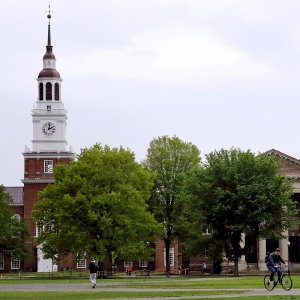Opinion: The right to strike
| Published: 01-30-2023 6:00 AM |
Jonathan P. Baird lives in Wilmot.
After stripping women of their reproductive rights, the far-right majority of the U.S. Supreme Court is now on the verge of weakening workers’ rights and the whole labor union movement. The Court just heard oral arguments in the case of Glacier Northwest Inc. v International Brotherhood of Teamsters Local Union No. 174, a case that threatens workers’ right to strike.
Back in 2017, the drivers of cement-mixing trucks went on strike after they were frustrated by the failure of collective bargaining negotiations with their employer, Glacier Northwest, a Seattle-based ready-mix concrete company. Eighty-five truck drivers walked off the job and went on strike. Sixteen of the drivers had trucks filled with concrete that had not yet been delivered. These workers drove their trucks back to company headquarters and left the trucks running.
The workers took the precaution of leaving their trucks running with their drums rotating so the cement would not harden and spoil. However, Glacier lacked the personnel to deliver all the concrete. The wet cement hardened and the company had to dispose of it. There was no damage to any truck. The strike settled a week later.
Afterward, Glacier sued the union in Washington state court for the intentional destruction of company property even though the ruined concrete was incidental to the strike and the workers took steps to avoid damage. The case made its way through Washington state courts. Ultimately, the Washington Supreme Court unanimously dismissed Glacier’s case on the grounds it lacked jurisdiction.
The Washington Supreme Court said the case had to be heard by the National Labor Relations Board, the NLRB. State court tort claims like Glacier’s are usually superseded by federal law. For a long time, the NLRB has had almost exclusive jurisdiction of strikes. The NLRB has a wealth of background, expertise and experience in labor disputes like Glacier’s.
The NLRB is a federal agency set up during the New Deal after huge strike waves in the 1930s. The right to strike is federally protected under the National Labor Relations Act. The statute was s response to the violent suppression of workers’ organizing by employers and the government. The NLRB was intended to equalize the power imbalance where workers were outgunned by corporate power.
The history of strikes in America has been an untold story and it is largely forgotten. In his classic book Strike! Jeremy Brecher writes, “This book is the story of repeated, massive and often violent revolts by ordinary working people in America…The story includes virtual nation-wide general strikes, the seizure of vast industrial establishments, guerrilla warfare and armed battles with artillery and aircraft.”
Article continues after...
Yesterday's Most Read Articles
 Kenyon: What makes Dartmouth different?
Kenyon: What makes Dartmouth different?
 One injured in downtown Franklin shooting, police investigating
One injured in downtown Franklin shooting, police investigating
 NH Center for Justice and Equity releases policy goals to address racial disparities
NH Center for Justice and Equity releases policy goals to address racial disparities
 NHTI to treat Medicaid dental patients after $500,000 donation
NHTI to treat Medicaid dental patients after $500,000 donation
 Opinion: A veteran, father, and coach’s plea to reject homophobic laws
Opinion: A veteran, father, and coach’s plea to reject homophobic laws
 Concord High graduate leads Pro-Palestine protests at Brown Univeristy
Concord High graduate leads Pro-Palestine protests at Brown Univeristy
To appreciate the reasons for the NLRB, it’s essential to understand our labor history with its many violent episodes. In the Glacier situation, the teamsters filed an unfair labor practice charge against the company and the NLRB issued a complaint charging the company with that unfair labor practice. Rather than accepting the NLRB’s jurisdiction, the company did an end run and appealed to the U.S. Supreme Court.
There has been a narrow exception to NLRB’s jurisdiction if a union intended to damage or vandalize property. In this instance, Glacier is saying the union intended to destroy property and they intentionally sabotaged company operations. The Court appears eager to use the case to further its anti-union agenda.
I believe the Court has two goals in taking the case. First, it wants to narrow the NLRB’s jurisdiction. Second, it wants to expose the teamsters (and all unions) to the possibility of having to pay damages for engaging in strikes. To quote Cornell professor Cathy Creighton, “Who’s going to go on strike when you know that if your strike is successful, you’ll be sued.”
The threat of being sued and sustaining damages could be a significant disincentive for any strike option. It would certainly add to any calculation. It’s no accident that this is happening at a time of increased worker organizing and union resurgence. There were 316 strikes in America in 2022, up from 257 in 2021. 240 Starbucks locations unionized in the past year as well as the large Amazon warehouse in New York.
Faced with a newly invigorated labor movement, the Supreme Court is out to hobble workers’ right to strike. Withholding labor by going on strike is labor’s most powerful tool. Based on the track record of the far-right Supreme Court majority, clipping labor’s wings is part of their agenda. Any Supreme Court observer can look back over the last 50 years and have a hard time finding even a single case where the justices ruled on the side of workers and against corporations.
It is a plutocrats’ court. By always siding with the rich and corporations against working people, the Court has discredited itself. Law and justice have often had a tenuous relationship but this Court is an outlier devoted to worsening economic inequality.
Back in 1971, not-yet-Supreme Court Justice Lewis Powell, then a corporate attorney, wrote a very influential secret memo for the U.S. Chamber of Commerce titled “Attack on America’s Free Enterprise System.” It embodied the long-range conservative political and legal vision. The present Court is the realization of Powell’s plan to reassert corporate power in the policy arena.
The goal of the far right conservative legal movement remains the destruction of New Deal programs created under the Franklin Roosevelt administration including a federal right to unionize. Far-right conservatives have never believed the government had the legal authority to create the administrative state that has been with us for almost 100 years. They long to return to a pre-1937 view of the Constitution.
The Glacier case looks to be a step in that direction. A decision is expected later this spring or early summer.
]]>


 Opinion: Look to facts in Medical Aid in Dying
Opinion: Look to facts in Medical Aid in Dying Opinion: In the debate on Medical Aid in Dying, facts matter
Opinion: In the debate on Medical Aid in Dying, facts matter Opinion: Ensuring access to banking for all NH communities
Opinion: Ensuring access to banking for all NH communities
